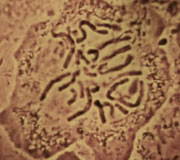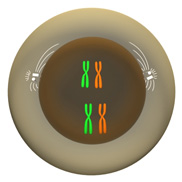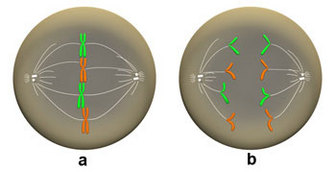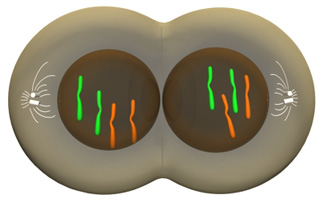« Prev Next »

Replication and Distribution of DNA during Mitosis

Most cells grow, perform the activities needed to survive, and divide to create new cells. These basic processes, known collectively as the cell cycle, are repeated throughout the life of a cell. Of the various parts of the cell cycle, the division portion is particularly important, because this is the point at which a cell passes its genetic information to its offspring cells. In many situations, division also ensures that new cells are available to replace the older cells within an organism whenever those cells die.
Prokaryotic cells, which include bacteria, undergo a type of cell division known as binary fission. This process involves replication of the cell's chromosomes, segregation of the copied DNA, and splitting of the parent cell's cytoplasm. The outcome of binary fission is two new cells that are identical to the original cell.
In contrast to prokaryotic cells, eukaryotic cells may divide via either mitosis or meiosis. Of these two processes, mitosis is more common. In fact, whereas only sexually reproducing eukaryotes can engage in meiosis, all eukaryotes — regardless of size or number of cells — can engage in mitosis. But how does this process proceed, and what sorts of cells does it produce?
What happens during mitosis?
During mitosis, a eukaryotic cell undergoes a carefully coordinated nuclear division that results in the formation of two genetically identical daughter cells. Mitosis itself consists of five active steps, or phases: prophase, prometaphase, metaphase, anaphase, and telophase. Before a cell can enter the active phases of mitosis, however, it must go through a period known as interphase, during which it grows and produces the various proteins necessary for division. Then, at a critical point during interphase (called the S phase), the cell duplicates its chromosomes and ensures its systems are ready for cell division. If all conditions are ideal, the cell is now ready to move into the first phase of mitosis.
Prophase


Prometaphase
Metaphase

Anaphase
Telophase

Why is mitosis important?
Further Exploration
eBooks
This page appears in the following eBook





















